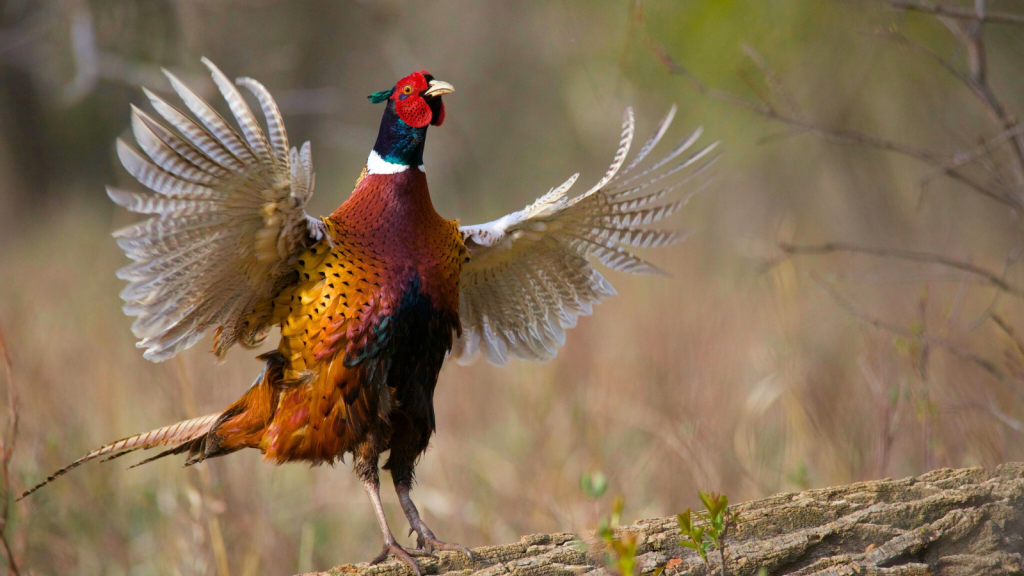Pheasants are stunning birds that capture our imagination with their vibrant colours and distinctive calls. These ground-dwelling creatures can be found in fields, woodlands, and even suburban gardens across the UK. While many of us have caught glimpses of these beautiful birds, there’s so much more to discover about them. From their incredible eyesight to their surprising running speeds, pheasants are full of fascinating surprises. Let’s explore some intriguing facts about these feathered wonders that might just change the way you see them on your next countryside stroll.
Colourful Characters
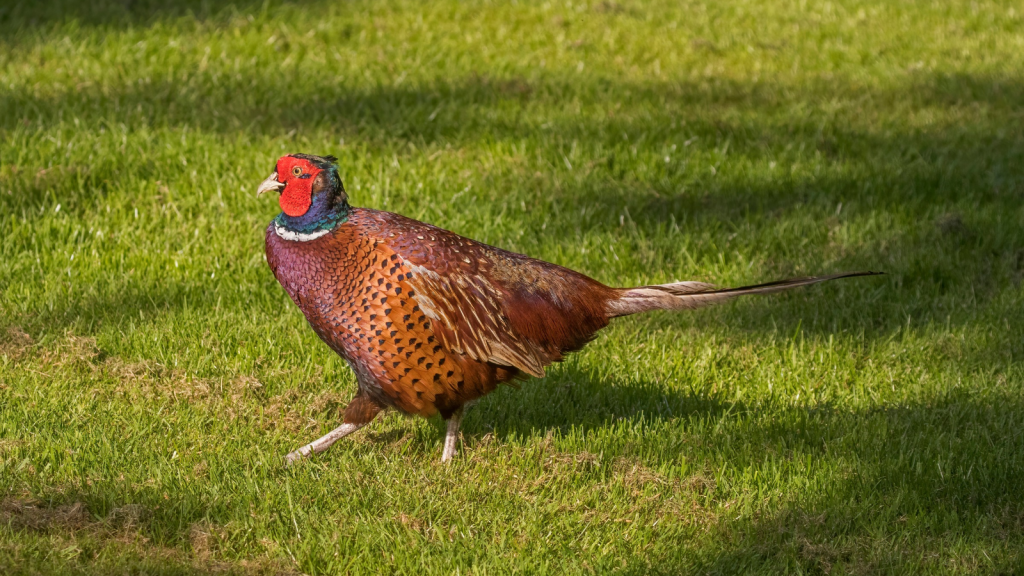
Pheasants are known for their striking appearance, especially the males. The cock pheasant sports a vibrant mix of copper, gold, and red feathers, with a distinctive green head and red facial wattles. Females, on the other hand, are more subtly coloured in mottled brown, which helps them blend in with their surroundings when nesting. Interestingly, some rare colour variations exist, including melanistic (all-black) and leucistic (partially white) pheasants. The iridescent feathers of male pheasants contain microscopic structures that reflect light, creating their brilliant sheen.
Eye-Popping Vision
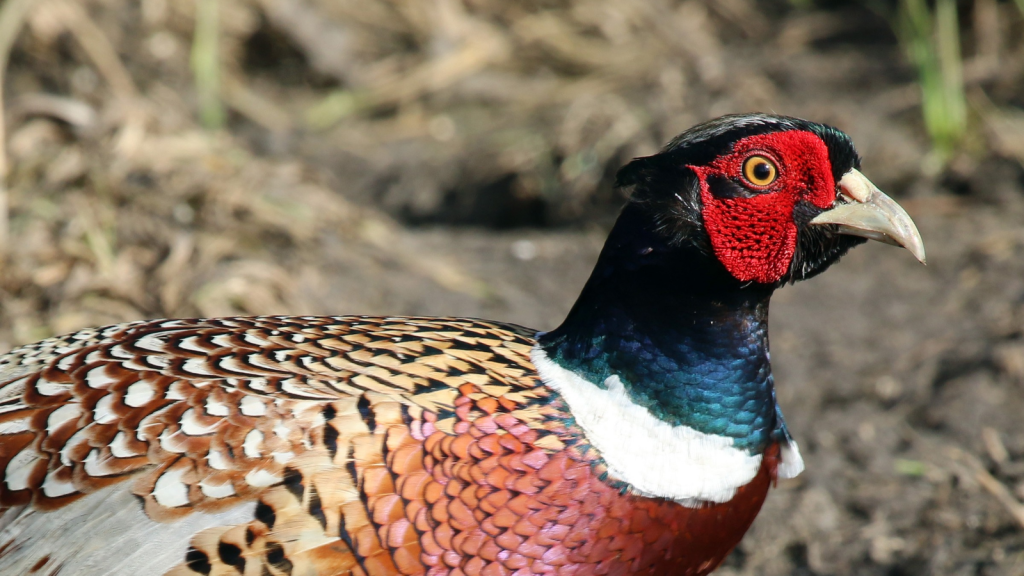
These birds have incredible eyesight, with a field of vision that spans nearly 300 degrees. This wide-angle view allows them to spot predators and food sources with ease. Their eyes are positioned on the sides of their head, giving them this impressive visual range. Pheasants can also see ultraviolet light, which helps them identify ripe fruits and navigate using celestial cues. Their exceptional vision allows them to detect movement up to 100 metres away, making them highly alert to potential threats.
Speedy Sprinters
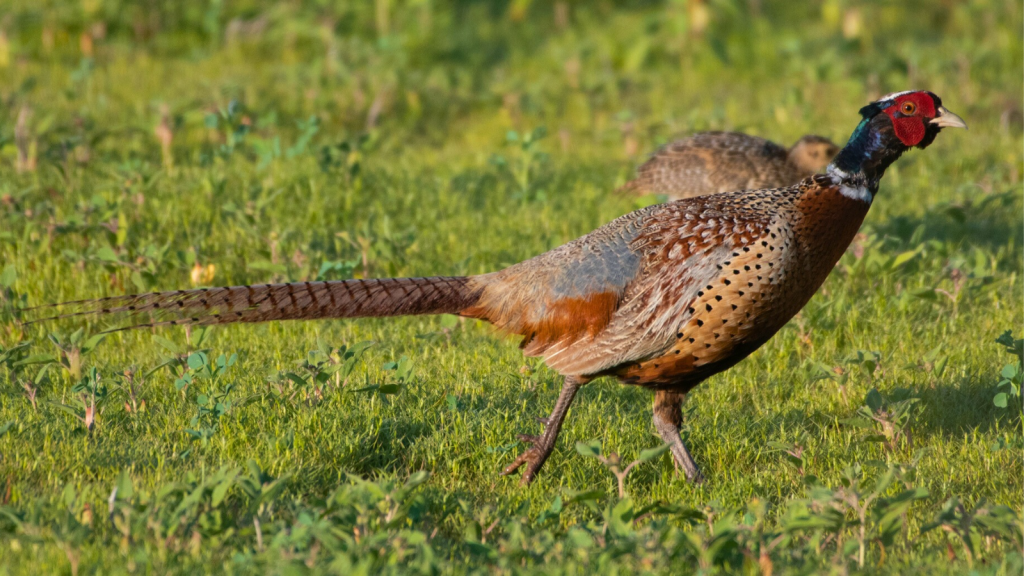
While pheasants can fly, they prefer to run when escaping danger. They can reach speeds of up to 40 miles per hour on foot, making them surprisingly quick escape artists. This speed helps them evade predators and navigate through dense undergrowth. Their strong legs are also equipped with sharp spurs, which males use for defence and fighting during mating season. Pheasants have specialised tendons in their legs that act like springs, allowing them to maintain high speeds with minimal energy expenditure.
Noisy Neighbours
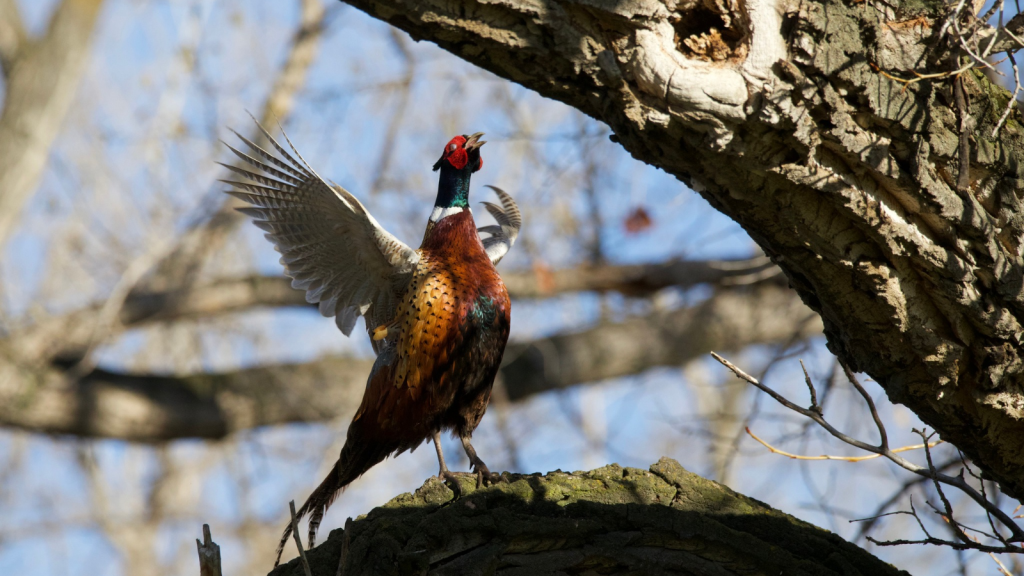
Male pheasants are known for their loud, harsh call, which can be heard from quite a distance. This distinctive “cock-a-doodle-doo” sound is used to attract mates and mark territory. Females, in contrast, make quieter clucking noises. Pheasants also produce a variety of other vocalisations, including alarm calls that warn other birds of approaching danger. Their calls can vary in pitch and intensity depending on the situation, with some males developing unique “dialects” within local populations.
Varied Diet
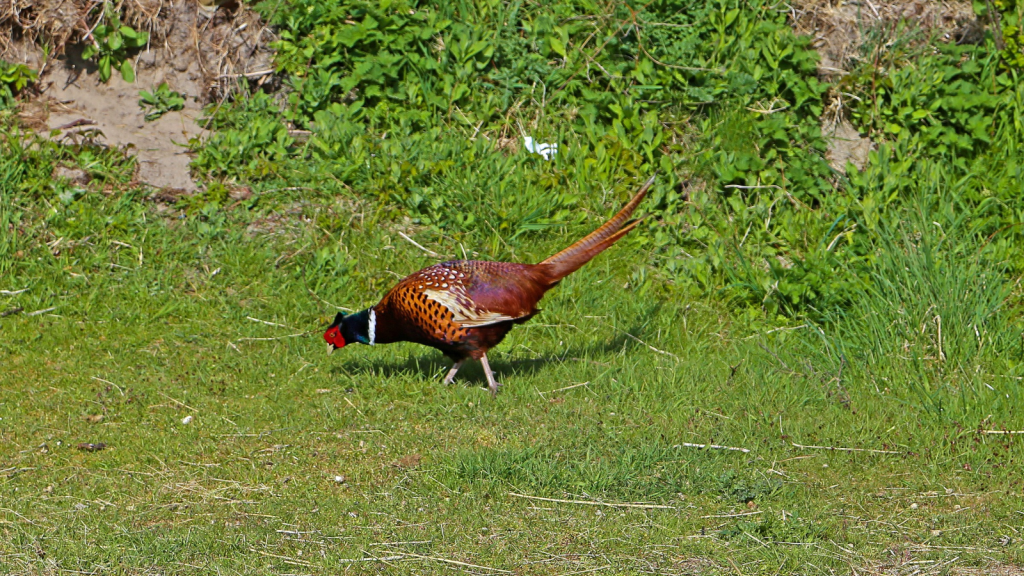
Pheasants are omnivores, enjoying a diverse menu of foods. They feast on seeds, berries, and insects, as well as small animals like lizards and mice. This adaptable diet helps them thrive in various habitats. In agricultural areas, they may also feed on crops, which can sometimes bring them into conflict with farmers. Pheasants have a muscular gizzard that helps them grind up tough foods, allowing them to digest a wide range of plant materials.
Nest on the Ground
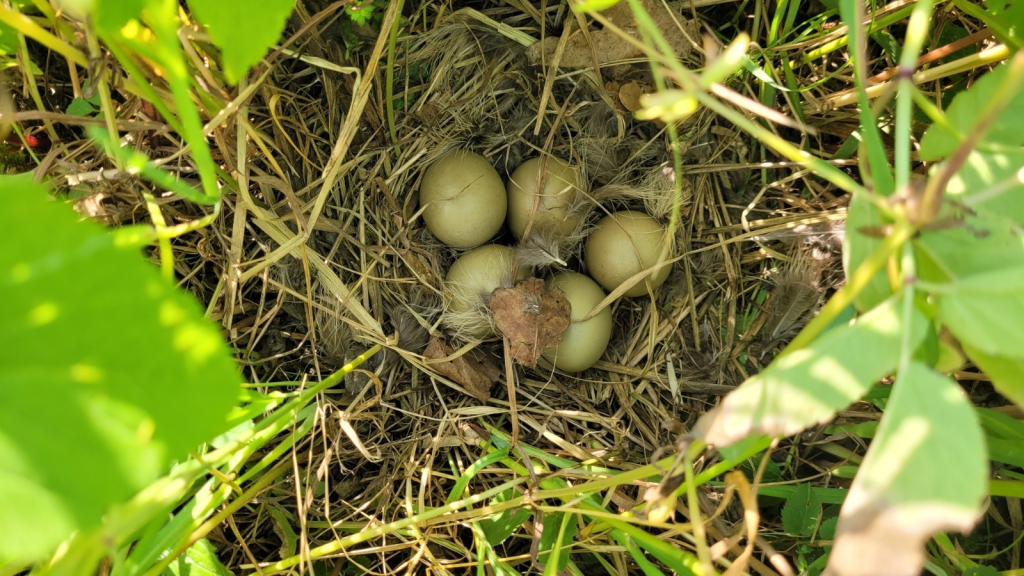
Unlike many birds, pheasants build their nests on the ground, often hidden in tall grass or under shrubs. The female lays a clutch of 8-15 eggs and incubates them for about 23-26 days. This ground-nesting behaviour makes them vulnerable to predators, but also allows for quick escape if needed. The nests are typically shallow depressions lined with grass and leaves, providing camouflage from above. Pheasant eggs are olive-brown in colour, which helps them blend in with their surroundings when the hen leaves the nest to feed.
Ancient Origins
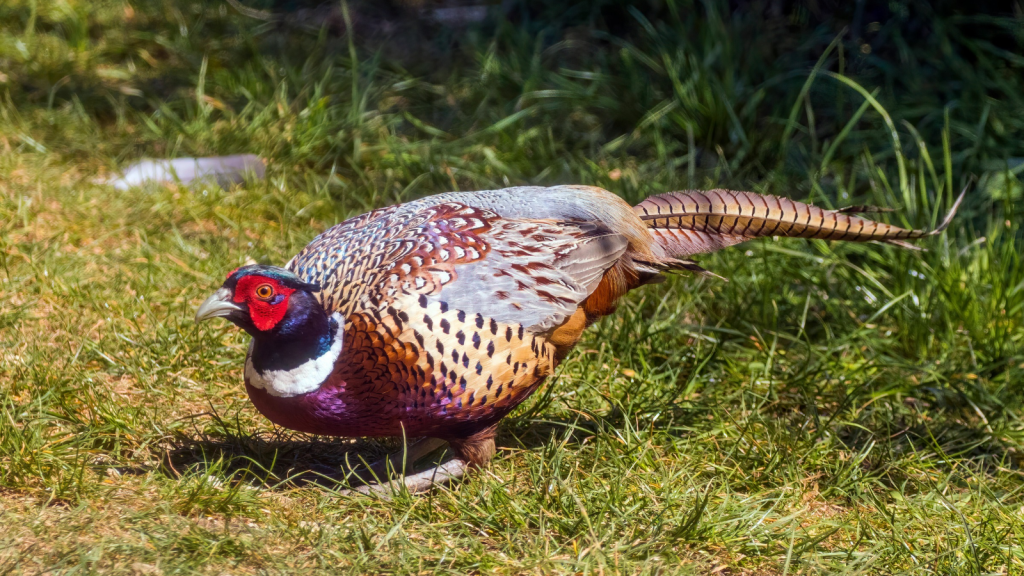
Pheasants have a long history in the UK, but they’re not native to these isles. They were introduced by the Romans nearly 2,000 years ago and have since become a common sight in the British countryside. Their adaptability has allowed them to thrive in their adopted home. The species most commonly seen in the UK is the ring-necked pheasant, originally from Asia. Fossil records show that pheasant-like birds have existed for over 20 million years, with ancestors dating back to the Oligocene epoch.
Polygamous Nature
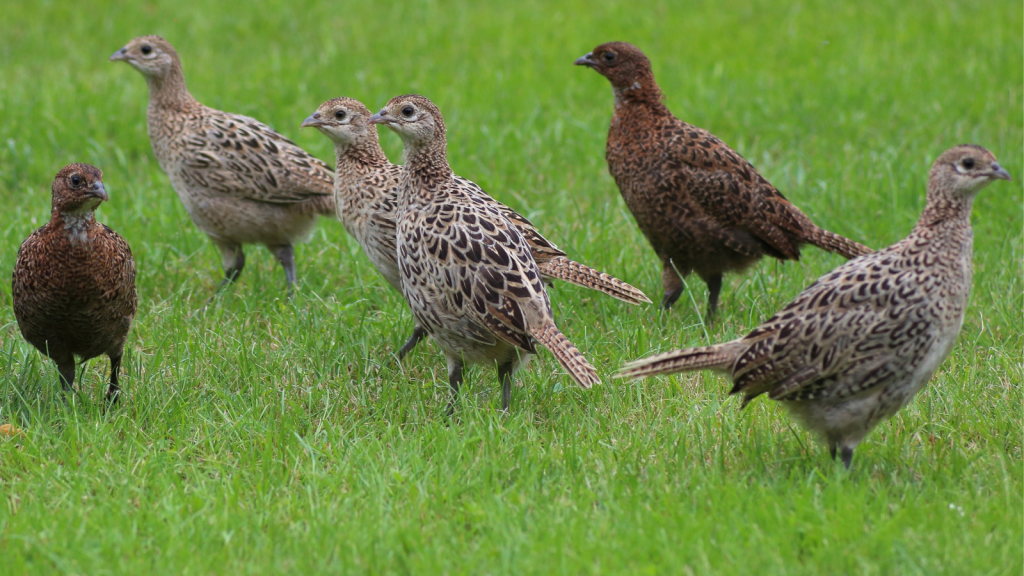
Male pheasants are polygamous, meaning they mate with multiple females during breeding season. A single cock may have a harem of up to six hens. This behaviour leads to fierce competition among males for mates. During courtship, males perform elaborate displays, fanning their tail feathers and strutting to impress potential mates. The most dominant males often secure the best territories and attract the most females, leading to a skewed reproductive success rate within populations.
Winter Survivors
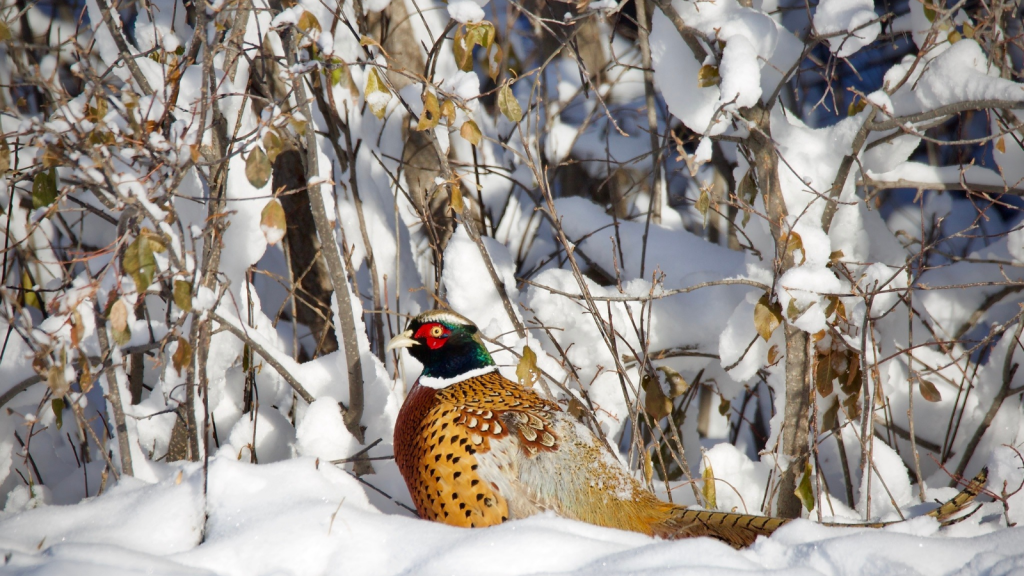
These hardy birds can withstand harsh winter conditions. They grow extra feathers for insulation and can even survive being covered in snow for short periods. Their ability to find food under snow and ice helps them make it through tough winter months. Pheasants also huddle together in groups during cold weather to conserve heat.
Impressive Lifespan

In the wild, pheasants typically live for about 3 years, but some have been known to reach 18 years old in captivity. Their relatively short lifespan in the wild is often due to predation and hunting pressures. The oldest recorded pheasant in the wild lived to be 7 years old, which is considered exceptional for the species. Pheasants in protected environments can live significantly longer, with some captive birds reaching 15 years or more with proper care.
Seasonal Colour Change
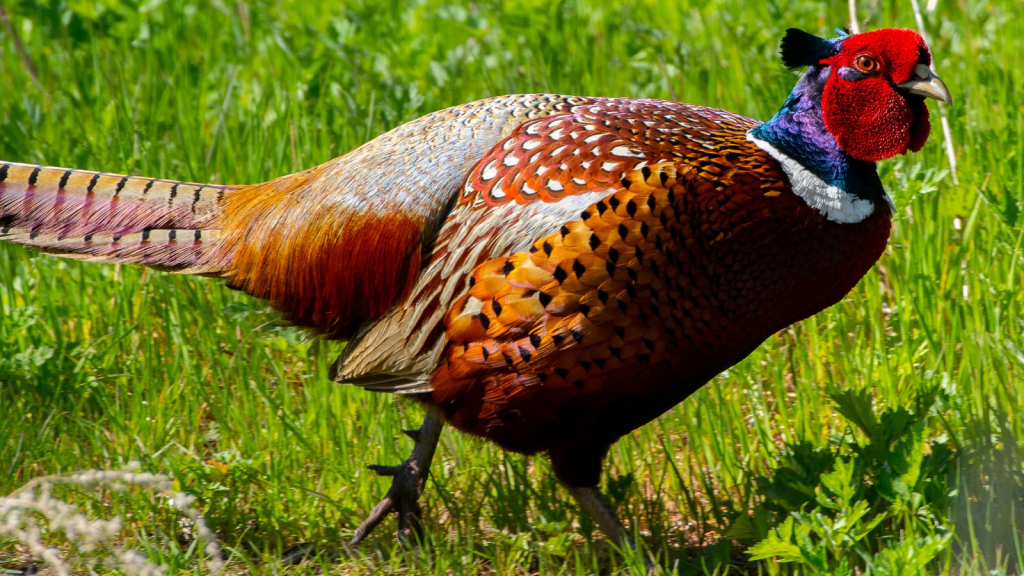
Male pheasants undergo a subtle colour change throughout the year. Their plumage becomes brighter and more vibrant during breeding season to attract mates. After breeding, their colours fade slightly as they moult and grow new feathers. This process, known as eclipse plumage, helps males blend in better during vulnerable moulting periods. The timing of this colour change is influenced by daylight hours, with longer days triggering the development of breeding plumage.
Swift Flyers

While they prefer to run, pheasants are capable of flying at speeds of up to 35 miles per hour when necessary. They often use this ability for short bursts to escape danger or reach roosting sites in trees. Their flight is characterised by rapid wing beats followed by gliding, creating a distinctive up-and-down pattern in the air. Pheasants can also perform impressive vertical take-offs, launching themselves almost straight up from a standing position to clear obstacles or evade predators.
Curious Chicks
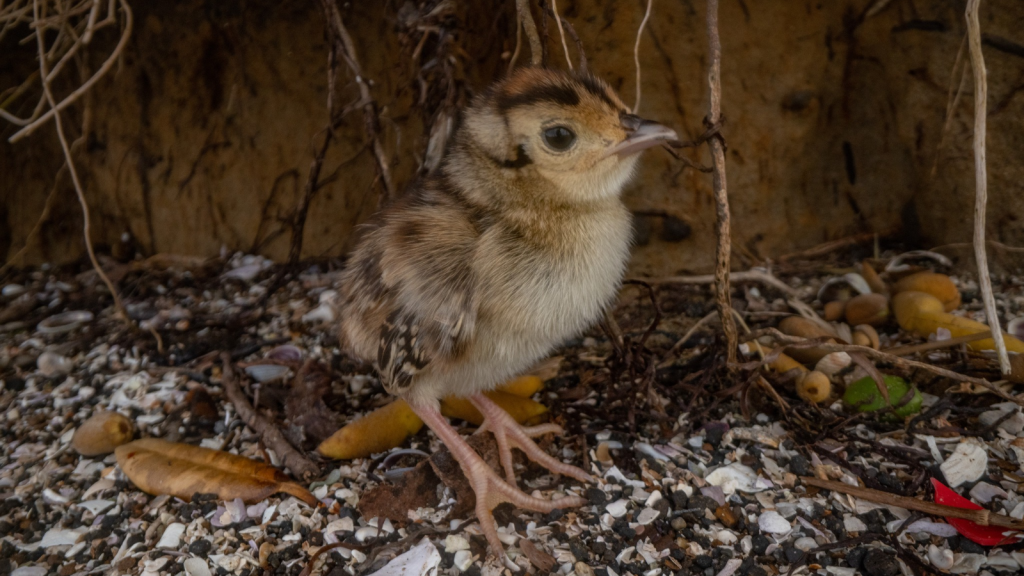
Pheasant chicks, known as poults, are precocial, meaning they’re born ready to leave the nest and feed themselves. Within hours of hatching, they can walk, run, and even start pecking for food. This early independence helps improve their chances of survival. Poults develop their flight feathers quickly, usually being able to make short flights by two weeks of age. Young pheasants learn vital survival skills by observing and imitating their mother, who teaches them to forage and avoid predators.
Valuable Game Birds
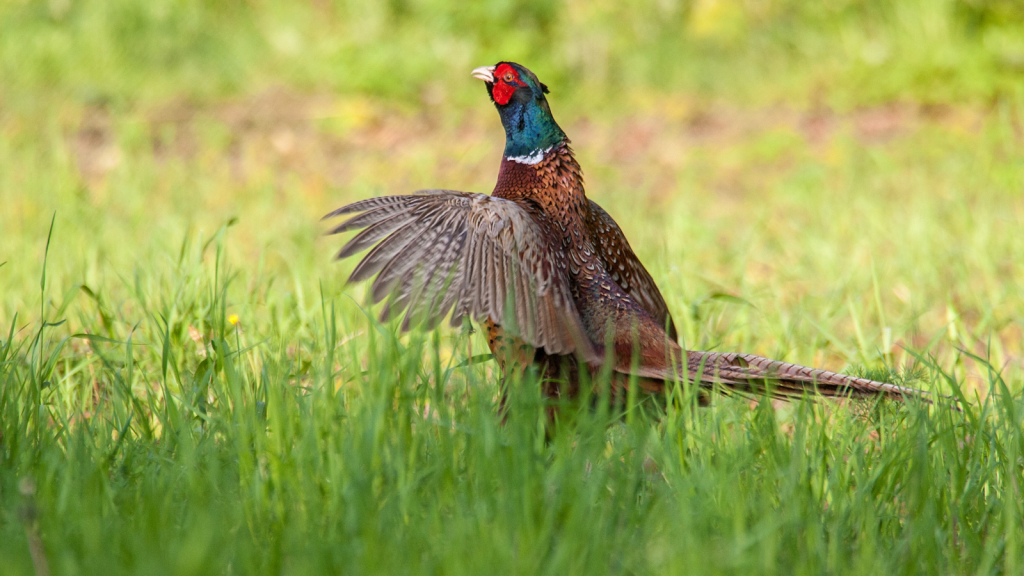
Pheasants are popular game birds in the UK, with millions released each year for hunting purposes. This practice has a significant impact on their population numbers and distribution across the country. It also contributes to the rural economy through hunting and associated industries. The management of land for pheasant shooting has had both positive and negative effects on local ecosystems and biodiversity. Conservation efforts now focus on balancing the economic benefits of pheasant hunting with sustainable practices that protect native wildlife and habitats.
Adaptable Habitats
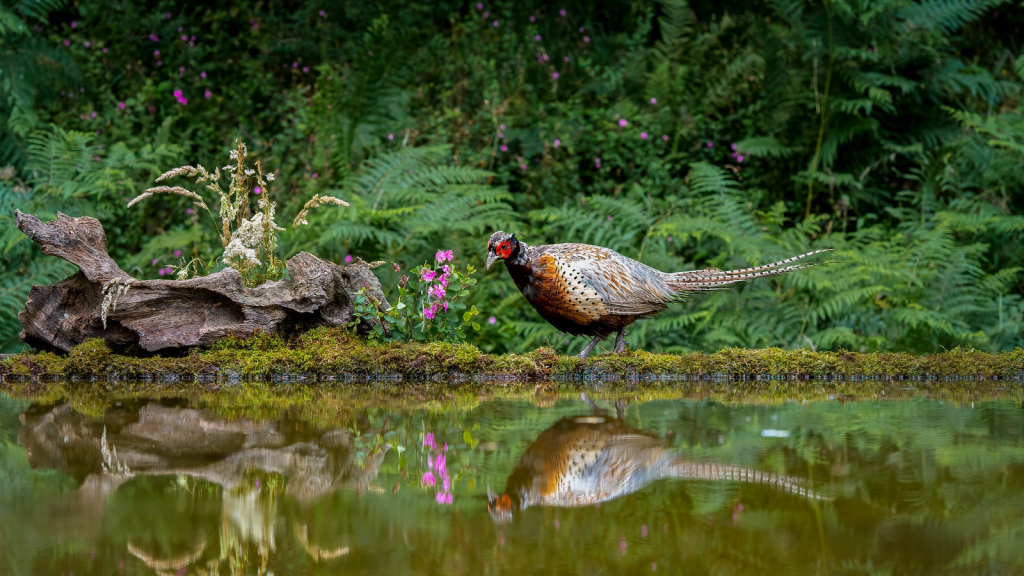
These versatile birds can thrive in various environments, from farmland and woodlands to moorlands and even urban parks. Their adaptability has helped them spread across much of the UK, becoming a familiar sight in many different landscapes. Pheasants prefer areas with a mix of open ground for feeding and dense cover for shelter, making them well-suited to the patchwork nature of the British countryside. Their ability to adapt to different habitats has allowed pheasants to colonise new areas, including some offshore islands where they have been introduced.
Becky is a fervent wildlife enthusiast and pet care expert with a diploma in canine nutrition. Her love for animals stretches beyond the domestic, embracing the wild tapestry of global fauna. With over a decade of experience in animal welfare, Becky lends her expertise to OutlandishOwl through insightful articles, captivating wildlife information, and invaluable guidance on pet nutrition. Her work embodies a deep commitment to understanding the intricate lives of animals and a passion for educating others on sustaining natural habitats. Becky's hands-on conservation efforts and her knack for translating complex dietary science into practical pet feeding tips make her an indispensable voice for creatures great and small.

